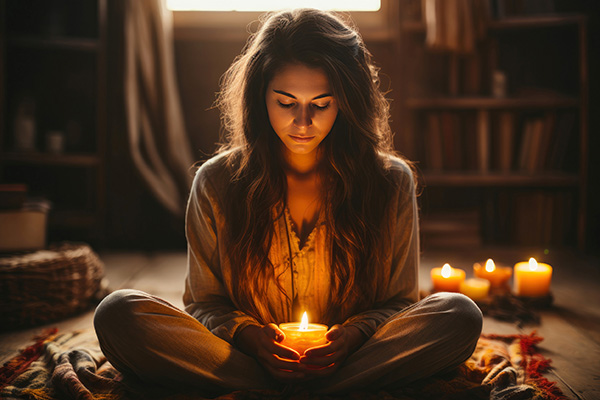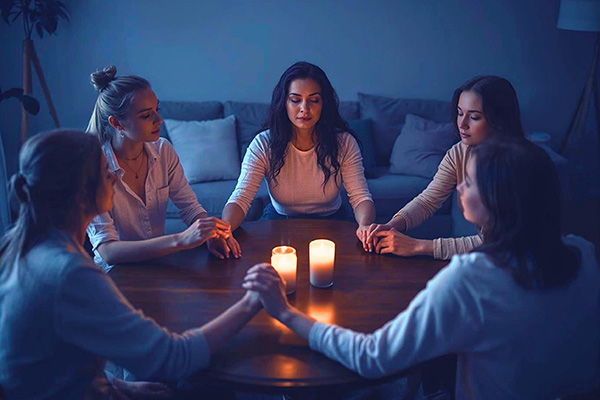spirit beings
The Timeless Magic Of Nature Spirits And Elementals
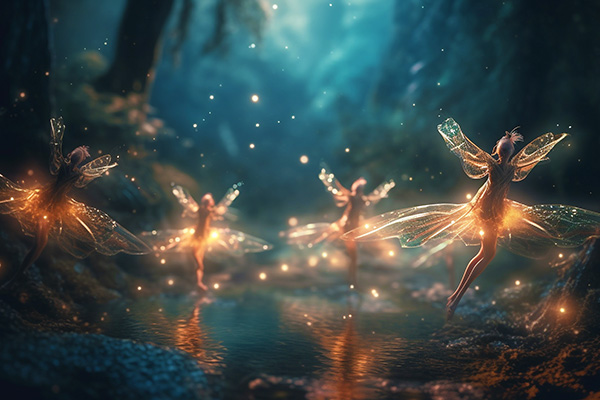 As a youngster growing up in the UK, I loved visiting a neighbor, Mrs. O’Leary, whose lilting Irish voice still echoes in my mind. She spoke often of the “Good People” and acknowledged their presence in her home and garden. I recall her taking us outside to witness her making small offerings to these unseen little mystical beings.
As a youngster growing up in the UK, I loved visiting a neighbor, Mrs. O’Leary, whose lilting Irish voice still echoes in my mind. She spoke often of the “Good People” and acknowledged their presence in her home and garden. I recall her taking us outside to witness her making small offerings to these unseen little mystical beings.
Though it feels like a distant memory now, I can still recall seeing them, too. Perhaps they appeared to us because we truly believed, or perhaps because Mrs. O’Leary invited them to show themselves.
Whatever the reason, those moments left a lasting impression. To me, it felt like truly being “in my element,” fully connected to the hidden, magical forces of nature.
I vaguely recall a magical moment in Mrs. O’Leary’s garden when she pointed out to me a tiny, translucent little figure perched on a large moss-covered rock at the base of her prized old hawthorn tree. With delight, she described how this “little person” was waving at us and encouraged me to wave back. Standing there with awe and intrigue, I became aware of what seemed like hundreds of luminous sprites dancing in the glistening water below.
Despite all the cynicism of a technologically driven world, increasingly devoid of the many miracles and wonders of nature and the unseen realms, Mrs. O’Leary and the spirits of nature still remind me of the healing, transformative power that lies in reverence, stillness, and everyday magic.
The Lesser-Known Art Of Trance Healing
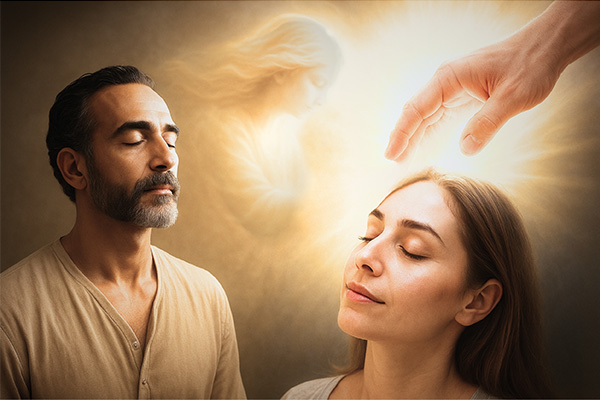 Many psychics and mediums are naturally drawn to healing and energy work. Many of us feel an innate pull toward alternative therapies, especially those that call upon the loving assistance of the spirit realm to heal the body, mind, and soul.
Many psychics and mediums are naturally drawn to healing and energy work. Many of us feel an innate pull toward alternative therapies, especially those that call upon the loving assistance of the spirit realm to heal the body, mind, and soul.
Whether we’re seeking healing for ourselves or exploring how other healers invite spirit intervention, the journey can be enlightening and transformative.
This interest in spirit-assisted healing became particularly strong for me recently when I visited a trance healer in Spain. He is a gifted medium and a highly respected healer, known both locally and in the United Kingdom.
There is something both grounding and ethereal about him, as though he walks the line between worlds with grace and strength. He has worked with spirit for most of his adult life. Even as a child, he had profound experiences with the unseen world.
As someone who works regularly with spirit in my own practice, I know how vital it is to tend to our physical, emotional, and spiritual well-being. He seems to understand this intuitively, and his healing touch addresses all of those aspects for me.
He practices trance healing. It’s different from the more traditional laying-on-of-hands and Reiki approaches. During our sessions, I feel intense waves of peace, warmth, and an almost electric tingling sensation, even though he never physically touches me. The energy flows through me with unmistakable potency, and it’s clear that something or someone from the spirit realm is orchestrating the experience.
Why Astral Projection Is A Popular Psychic Practice
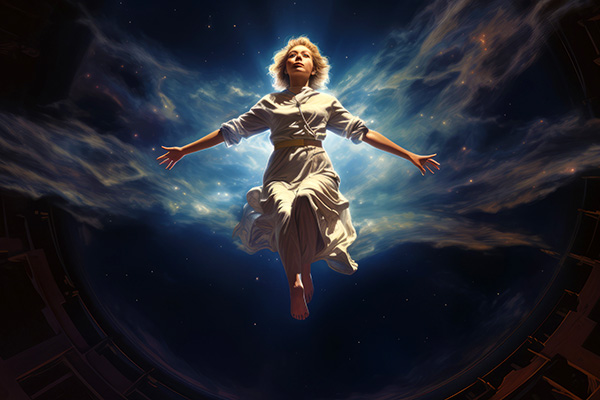 Years ago, my best friend told me that she was having what she described as “floating experiences.” She said that, as she was winding down for the night in bed, she would suddenly feel as though her spirit were drifting above her body. She was really unsettled by this at the time, because she was not trying to make it happen, nor did she feel in control of it.
Years ago, my best friend told me that she was having what she described as “floating experiences.” She said that, as she was winding down for the night in bed, she would suddenly feel as though her spirit were drifting above her body. She was really unsettled by this at the time, because she was not trying to make it happen, nor did she feel in control of it.
At the time, I was deeply involved in psychic development. I spent my evenings buried in books, engaged in discussions, and exploring various spiritual practices.
The moment she described her experiences, I knew exactly what she was talking about. I realized she was describing astral travel. It was nothing new to me, as I had been practicing it myself for quite some time.
Astral travel is the experience of your mental awareness, or your “conscious self,” separating from your physical body and exploring other realms of existence. It’s the experience of your inner being, your soul or spirit, moving beyond the limits of time and space and the restrictions of the material world.
Once you “leave” your physical body, earthly rules no longer apply. Gravity and distance as we know it no longer apply. Some travelers report visiting faraway places on Earth, while others explore entirely different realms or even other planets. For many, this experience proves that we are more than flesh and bone. We are souls with vast potential.
Why You’re Absolutely Meant To Be Here!
 Lately I’ve been hearing more cries for help from clients saying things like: “I really don’t want to be here anymore,” “No one will even miss me when I’m gone,” or “This world is not for me, I never belonged here anyway.”
Lately I’ve been hearing more cries for help from clients saying things like: “I really don’t want to be here anymore,” “No one will even miss me when I’m gone,” or “This world is not for me, I never belonged here anyway.”
This sense of despair seems to have increased in recent times. For many, there seems to be an overwhelming sense that the world is spinning out of control. More and more people are struggling with a deep sense of disconnection and hopelessness, triggered by the relentless pace of global upheaval and chaos.
Some also speak of a deep inner alienation — a quiet pain that comes from trying to reconcile their heartfelt values and dreams with a daily reality that feels cold, uncertain, cruel, and fragmented. They no longer see the compassion, unity, or progress they once believed in, and this leaves them questioning their place in the world, or if they even belong here.
It is a powerful reminder of the urgent need for the world’s lightworkers to rise — to hold space, to nurture hope, to foster connection, and to work toward a more compassionate and sustainable future.
I, for one, do not share this negative view regarding my place and purpose in this world, because about three decades ago I faced a serious illness that nearly ended my life. This traumatic chapter led me to a profound realization: we plan our lives before we incarnate, and we all absolutely belong here!
